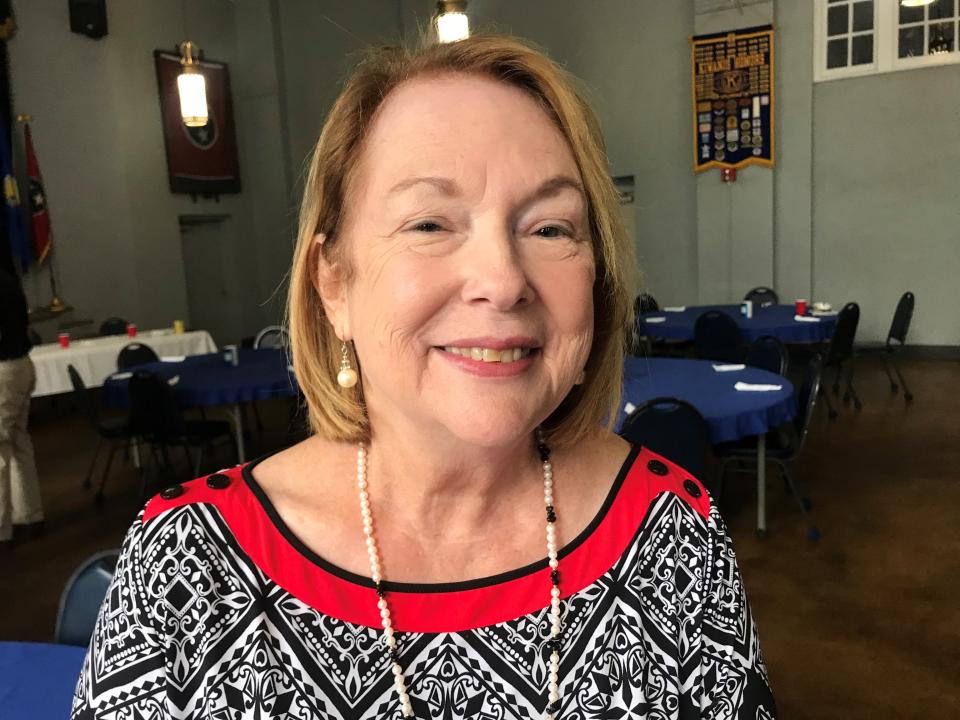Sheila Hickman: Lessons to be learned from Dickens' 'A Christmas Carol'
- Oops!Something went wrong.Please try again later.
On December 19, 1843, Charles Dickens published "A Christmas Carol," and by 1844 13 editions had been produced. Although Dickens wrote other Christmas stories, "A Christmas Carol" is the most well-known. The novella has been translated into many languages and has never been out of print.
Dickens paid for the publication himself and received a percentage of the profits.
The first edition sold 6,000 copies. The story was so popular that Dickens gave 127 public readings before he died in 1870.
There have been numerous movies and adaptations of the story. A very short silent film was the first in 1901. Since then, the movies have been somewhat like the original but often with noticeable differences. Mickey Mouse, the Muppets, Mr. Magoo, Buggs Bunny and the Flintstones have joined George C. Scott and Michael Cain to record what Dickens subtitled "Being a Ghost Story of Christmas." Broadway productions and an opera have added to the catalogue of the story.
Some historians consider Dickens the father of Christmas as we know it. The theme and the lessons from "A Christmas Carol" are just as relevant today as they were one 179 years ago. The great constant, human nature, never changes. A rereading of Dickens’ story reminds us of man’s weaknesses and the possibility of learning to live more responsibly.
Ebenezer Scrooge, the main character, has come to symbolize “a squeezing, wrenching, grasping, scraping, clutching, covetous old sinner” as the proprietor of a counting house. When Scrooge is approached by those collecting for the poor, he says, “Bah, humbug.” Early in the story, Scrooge goes home to be visited by his former business partner, Jacob Marley. Marley has been dead for seven years, and he has been condemned to wander as a ghost bound with chains attached to money boxes. Marley has been sent to remind Scrooge that his miserly ways will lead him to a similar doom, and he tells Scrooge he will be visited by three spirits.
For the next three nights when the bell tolls one, ghostly visitors will come to see Scrooge that he might escape Marley’s fate. The Ghost of Christmas Past comes first. The Ghost of Christmas Present is followed by the Ghost of Christmas Yet to Come. Each of these spirits conduct Scrooge through scenes of his life and the future. With the Ghost of Christmas Past Scrooge can see himself as a lonely young school boy, as an apprentice to his first boss Fezziwig, and as his sweetheart tells him that he loves money more than her. The spirit departs, and Scrooge wakes up in his own bed.
When the bell strikes one just as Marley predicted, another spirit, the Ghost of Christmas Present, appears. This Ghost leads Scrooge to Bob Cratchit’s house. Bob, Scrooge’s clerk, has come home to his wife, daughters, and sons. Tiny Tim, the youngest of the Crachits, wears braces and walks with a crutch but is full of joy. Despite their obvious poverty the Crachits are very grateful for each other and for their blessings. In the next part of the tour the Ghost also shows the Christmas spirit in very gloomy places being enjoyed by coal miners and sailors on a ship at sea. Fred, Scrooge’s nephew, is seen having a party to celebrate the holiday. In a departing lesson, the Ghost reveals two pitiful children: the boy is Ignorance; the girl is Want.
The clock strikes 12 a.m. and the Ghost of Christmas Yet to Come appears. Scrooge notes that he fears the future. Scrooge sees the sobering scene of his death and the plundering of his household goods. Alas, no one seemed to care that Scrooge has passed on. A visit to the Cratchits reveals that Tiny Tim had passed away. The final scene shows the Ghost and Scrooge at the graveyard with Scrooge’s tombstone.
The three Ghosts, their visits, and their revelations make Scrooge a better man. He states that he will honor Christmas in his heart for the whole year. He hopes that he may change the bad things he witnessed by leading an altered life.
The lessons from "A Christmas Carol" begin with the importance of the spirit of Christmas. Fred and Fezziwig know how to enjoy themselves and to share that joy with others. Scrooge is the direct opposite saying that he cannot afford to make idle people merry. An important lesson is the responsibility to help the poor especially at Christmas. The figures of Ignorance and Want remind us that both are present today.
A moving lesson comes from the Cratchit family, who has very little material wealth but a vast amount of love and compassion. The Cratchits exemplify the spirit of Christmas as enjoyed by a family.
The novella’s overriding theme is redemption.
Scrooge’s use of the future tense reveals that he will be a different person. He realizes that he cannot change the past, but that he can become known as a person filled with joy.
The ending of the story describes a new and improved Scrooge. He gave Bob Cratchit a raise, and he helped Bob’s family. Tiny Tim did not die, and Scrooge became his second father. Scrooge became known as a good man throughout the borough. He realizes that with his wealth comes responsibility.
Dickens writes: “He had no further intercourse with spirits … and it was always said of him that he knew how to keep Christmas well if any man alive possessed the knowledge. May that truly be said of us, and all of us! And so, as Tiny Tim observed, God bless us, everyone!”

Sources: "The Christmas Stories of Charles Dickens and Personal Lecture Notes"
This article originally appeared on The Daily Herald: Sheila Hickman: Lessons to be learned from Dickens' 'A Christmas Carol'

